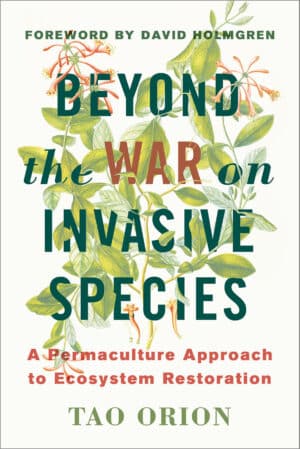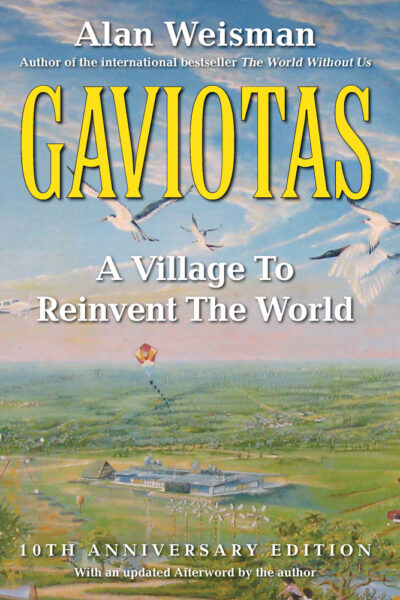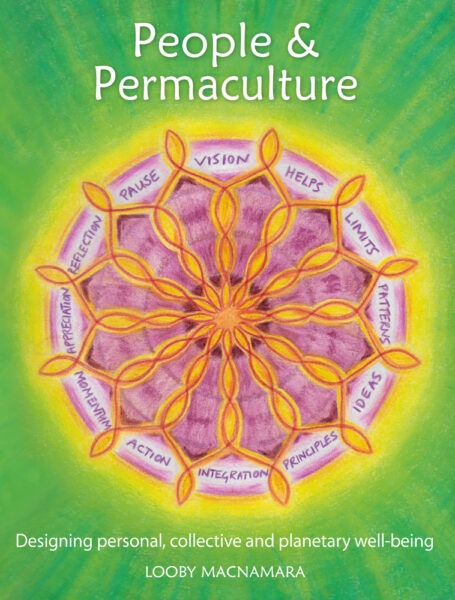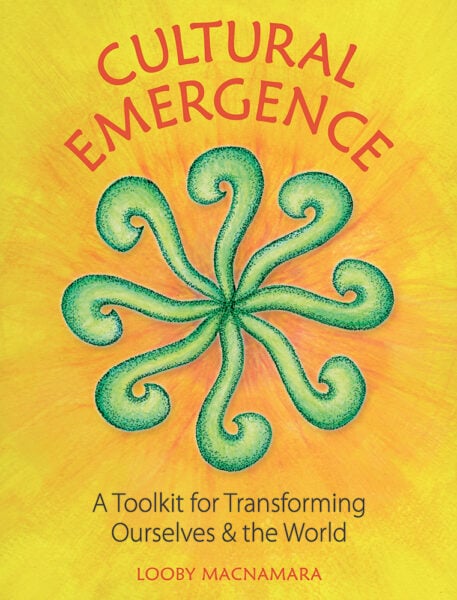Oxeye Daisy: A Plant for the Pollinators
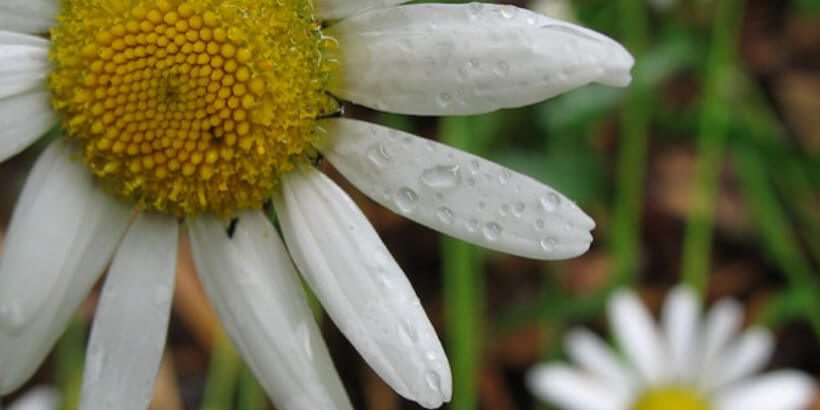
As Invasive Species Week continues, Tao Orion, author of Beyond the War on Invasive Species, and Katrina Blair, author of The Wild Wisdom of Weeds, are sharing alternative approaches to managing and using plants considered to be “invasive.” In this excerpt, they discuss the oxeye daisy.
Classification: Leucanthemum vulgare
Geographical location: Western states, Pacific northwest
Description: Oxeye Daisy is a perennial herb. The stem is mostly unbranched and sprouts laterally from a creeping rhizomatous rootstock. The leaves are dark green on both sides, with some spoon-shaped and serrate to dentate and the upper ones shorter, sessile, and borne along the stem.
Oxeye Daisy has a small flower head that consists of about 20 white ray florets that surround a yellow disc.
Oxeye Daisy: An Important Plant for Pollination
By Tao Orion
The oxeye daisy (Leucanthemum vulgare) hails from Europe and Asia, and is considered an invasive species throughout North America, especially in pastureland and on grain farms.
Oxeye daisy is known to follow disturbance, and in Washington, where it is considered a ‘Class B’ noxious weed and subject to quarantine restrictions, the state Noxious Weed Control Board reports that the plant is known to grow in overgrazed pastures, waste areas, roadsides, and railroad rights-of-way.
Like many invasive species that thrive in the wake of disturbance, a good question for Washington’s Noxious Weed Control Board would be – what should we expect to grow in these places? Does oxeye daisy truly out-compete native plants, or do overgrazing, road construction and maintenance, and the very concept of ‘waste’ spaces challenge populations of native plants?
A recent analysis of the population status of native pollinators found their numbers have declined sharply over the past three decades. Bumblebees, mason bees, sweat bees, and other solitary bees, as well as various species of wasps and flies, provide valuable pollination services in agricultural and non-agricultural contexts.
The study listed establishing wildflower strips, leaving pioneer vegetation intact, and maintaining habitat rich in floral resources as the best ways of preserving and enhancing populations of these important insects.
Oxeye daisies are known as one of the most important plants for pollinators in the UK, and evidence from North America confirms that diverse types of pollinators, including beetles, ants, and moths, also use oxeye daisies as a source of pollen and nectar.
So oxeye daisies are serving valuable ecological functions – potentially more valuable than the crops they grow next to or the pasture grasses they appear to compete with.
I have oxeye daisy on my farm, and I’ve noticed its numbers decline significantly over the course of several years of careful grazing. The added nutrients from animal manure and urine increase the growth of perennial grasses and forbs and the oxeye daisy doesn’t grow as vigorously.
Though I didn’t plan on specifically addressing the oxeye daisy patches, now the ground where they once grew is covered in lush clover, vetch, and many species of grasses.
And, though the daisies are few and far between, there is plenty of food and habitat for pollinators and other insects, as well as birds, mammals, reptiles, and amphibians.
The conventional agricultural model that sees plants like oxeye daisy as competitors to more desirable crop species needs to acknowledge the larger ecological context that a farm exists in – if you remove oxeye daisy, what’s left for pollinators?
All too often, there’s nothing, and the disturbing trends of pollinator population declines will likely continue until modern commodity production systems are designed to encourage the proliferation of biological diversity rather than achieve increasing profits from single crops.
So instead of thinking about removing a plant like oxeye daisy, consider how you can improve the fertility and diversity of habitat resources in your home landscape, garden, or farm. If the daisy is prolific now, over time, it won’t be, and other plants will thrive where it once did.
With oxeye daisy, as with all invasive species, its more important to think about what you need to add to – rather than what you want to take away from – an ecosystem to improve its diversity, abundance, and resilience.
Understanding the inherent value in every plant
By Katrina Blair
I spent the day “harvesting” oxeye daisy for a Bee Happy Lands organic land management project. Hundreds of tiny bugs, insects, flies, bees, beetles and butterflies were gathering on the flowers for nectar. I pulled or picked these beautiful flowers because they are on the noxious weed list in Colorado.
They are illegal to grow here. We have made marijuana legal but what about all the of the wild weeds? Oxeye daisies look very much like Shasta daisies but smaller. They smell like honey or pollen and maintain their integrity as a cut flower bouquet for quite a long time.
As I was picking them I had to come to peace with the fact that I was truly disturbing this amazing present moment ecosystem. I made myself feel a little better by thinking of everyone that I would be giving a bouquet of flowers to.
I am only harvesting these plants because of someone else’s rule, which I have to admit, I do not agree with. However the true motivation for me is to prevent herbicide from being applied to the earth, the waterways and on all of life here in the mountains.
I accept that it is of service for me right now to be a bridge for a renewed education regarding the debate of “native vs. non-native species”. I wish to convey the perspective that all plants have inherent value. It is time to change the rules.
I am realizing more and more that our mode of thinking about native vs. non-native is flawed and outdated and is clearly no longer serving a holistic model of global earth restoration. It is excessively common for these labeled “non-native” species to be the focus of a negative view and then are subject to herbicides and other eradication techniques.
Let’s consider the perspective that all plants serve a greater purpose as nature is intending them to do. Let’s entertain the notion that all plants are growing in divine perfect order with the nature of the universe.
This attitude frees our culture from judging whether or not plants shoud be there of not, or whether they are good or bad. We have to remember that change is constant. Nature will constantly adapt with new plants growing in an area as new climate changes occur and new disturbances happen.
By relaxing into the great turning of the tides of change, we are free to appreciate and enjoy our beautiful earth home.
Recent Articles
Garlic mustard: while known as “invasive,” this plant can be consumed in its entirety and has great nutritional value. Plus, the garlic-flavor is a perfect addition to any recipe that calls for mustard! The following are excerpts from Beyond the War on Invasive Species by Tao Orion and The Wild Wisdom of Weeds by Katrina…
Read MoreEveryone loves a refreshing, fermented, nutritious drink…even your garden! Take your fermentation skills out of the kitchen and into the garden by brewing fermented plant juice. The following is an excerpt from The Regenerative Grower’s Guide to Garden Amendments by Nigel Palmer. It has been adapted for the web. How to Make Fermented Plant Juice Fermented…
Read MorePeregrine falcons, while known as predators, are essential to our environment. These stunning birds have a rich history, an interesting present, and an uncertain future. The following is an excerpt from Feather Trails by Sophie A. H. Osborn. It has been adapted for the web. Who Are Peregrine Falcons? Though relatively uncommon wherever it occurs,…
Read MoreWant to see your crops thrive this upcoming growing season? The key is in soil fertility and health. Spend time maintaining your soil’s health to guarantee bigger and better crops come harvest time! The following is an excerpt from No-Till Intensive Vegetable Culture by Bryan O’Hara. It has been adapted for the web. What Is Soil Fertility?…
Read MoreMany know the effects of catnip on our feline friends, but few realize that catnip has medicinal effects for humans. From stomach aches to reducing fevers, catnip is a versatile herb with many benefits. The next time you grow this plant for your cat you may end up taking a few cuttings for yourself! The…
Read More

